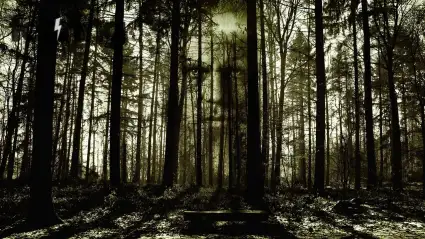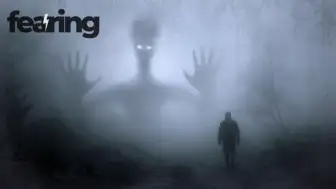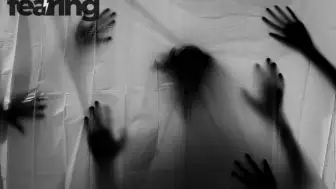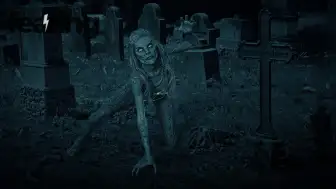Abandoned Asylums and Haunted Hospitals of Europe are among the most hauntingly beautiful ruins in the world. Once filled with voices, movement, and the promise of healing, these vast buildings now stand silent — their echoing corridors telling stories of pain, compassion, and the fragile line between care and cruelty.
In 2025, interest in these places has grown beyond curiosity. Historians, urban explorers, and paranormal researchers visit them not just for chills, but to confront the history of medicine, psychology, and human resilience. As author Mary Roach says, “Hospitals remember more than doctors do — they keep the sound of every unanswered question.”
The Shadows of History
Europe’s oldest psychiatric institutions date back to the 13th and 14th centuries, when mental illness was misunderstood and stigmatized. Treatments ranged from experimental to inhumane, leaving behind a legacy of suffering that many believe still lingers.
Cultural historian Dr. Sarah Bartlett explains, “These asylums are physical testaments to how societies once defined sanity. Their ghosts are not supernatural — they are historical.”
Many were abandoned after deinstitutionalization in the 20th century, yet their reputations for hauntings only grew. Visitors often report cold drafts, whispered voices, and sensations of being watched — whether caused by imagination or the heavy atmosphere of forgotten history.
Europe’s Most Notorious Abandoned Hospitals
Below are some of the most famous and accessible Abandoned Asylums and Haunted Hospitals across Europe, each with its own chilling reputation.
| Location | Country | Established | Notable Haunting or History |
|---|---|---|---|
| Poveglia Island Hospital | Italy | 1793 | Quarantine site for plague victims; whispers and shadows still reported |
| Beelitz-Heilstätten | Germany | 1898 | Former Nazi sanatorium; Adolf Hitler once treated here |
| Severalls Hospital | England | 1913 | Site of unethical lobotomies; screams allegedly heard at night |
| Denbigh Asylum | Wales | 1848 | Patients reported chained underground; visible shadow figures |
| Ospedale al Mare | Venice, Italy | 1930 | Art Deco hospital overtaken by vegetation; eerie silence |
| Lier Sykehus | Norway | 1926 | 20,000 patients once lived here; several wards permanently sealed |
| Hellingly Hospital | England | 1903 | Massive complex with underground tunnels; known cold spots |
| Hôpital Saint-Jean | France | 1870 | Abandoned maternity wing with ghostly apparitions |
| Hartheim Castle Sanatorium | Austria | 1898 | Used in Nazi euthanasia programs; now a memorial museum |
| Ospedale Psichiatrico di Volterra | Italy | 1888 | Graffiti of patients remain; “Lost Souls” corridor still intact |
Urban explorer Lena Meyer, who has photographed over 50 abandoned hospitals, says, “It’s not the ghosts that haunt you — it’s the silence. Every room feels like it’s waiting for someone who will never return.”
Science or Superstition?
Many paranormal teams have studied these sites using environmental sensors and audio recorders. The results are ambiguous: unexplained temperature drops, faint voices, or electromagnetic fluctuations that defy easy explanation.
Neuroscientist Dr. Olaf Blanke points out, “Abandoned hospitals are perfect laboratories for perception. Darkness, acoustics, and expectation all heighten sensitivity. Our brains try to fill the silence.”
Still, investigators report consistent patterns. In Beelitz-Heilstätten, for example, electromagnetic readings spike in the surgical wing at the same time every night. Whether caused by wiring, residual energy, or suggestion, no one can fully explain why.
The Technology Behind the Fear
Modern investigators use a blend of scientific tools and creative intuition.
| Tool | Purpose | Usage in Asylums |
|---|---|---|
| Thermal Imaging | Detect heat signatures | Tracks movement in dark hallways |
| EMF Readers | Measure electromagnetic fields | Monitor “active zones” with unusual readings |
| EVP Devices | Capture disembodied voices | Record in known “hot spots” |
| AI Audio Analysis | Filter background noise | Identify repeatable sound anomalies |
| 3D Mapping Drones | Scan decaying interiors safely | Used in inaccessible upper floors |
Engineer Marina Lopez comments, “Technology won’t prove ghosts, but it will show patterns that the human ear and eye miss. That’s where truth begins — in data.”
The Ethics of Exploration
The rise of “ruin tourism” has sparked debate about whether these explorations respect or exploit the past. Some asylums have become protected heritage sites; others remain off-limits to prevent vandalism.
Historian Dr. Ibrahim Kaya argues, “Exploration must balance curiosity with care. These are not playgrounds — they are archives of suffering.”
Many institutions, like Hartheim Castle and Volterra, now operate as memorial museums. Visitors are encouraged to document but not dramatize, preserving dignity for those who once lived and died there.
Why These Places Still Speak
Haunted hospitals fascinate because they blur boundaries — between life and death, health and decay, science and faith. Psychologist Dr. Chris French explains, “We fear hospitals because they are thresholds. A place of healing can become a place of loss overnight.”
Visitors often describe conflicting emotions: sadness, awe, and even peace. Traveler Elena Rossi, after visiting the ruins of Ospedale al Mare, said, “It wasn’t frightening. It was human. You can feel the compassion and the pain mixed in the same air.”
The Art and Photography Movement
A new wave of European photographers captures the melancholic beauty of abandoned hospitals. Known as “ruin aesthetics,” their work transforms derelict spaces into visual poetry.
Artist Jean-Luc Descartes, who exhibited Silent Wards in Paris, says, “When you photograph these places, you realize they’re not dead. They’re just waiting to be remembered.” His project aims to preserve their architectural grandeur before nature reclaims them entirely.
Visiting Responsibly
For those drawn to explore, experts advise preparation and respect:
Seek Permission: Many asylums are restricted or privately owned.
Use Safety Gear: Floors and ceilings may be unstable; bring protective clothing and lighting.
Avoid Trespassing: Join authorized tours where available.
Respect the Past: Don’t remove objects or graffiti; they are historical traces.
Document Thoughtfully: Focus on storytelling, not sensationalism.
As heritage conservator Sarah Bartlett reminds us, “Curiosity is valuable only when paired with reverence.”
The Future of These Forgotten Places
European governments are now balancing preservation and safety. Some sites, like Beelitz-Heilstätten, are partially restored as museums, while others remain under watch for redevelopment. The challenge lies in protecting the past without erasing it.
Architect Lena Ortiz concludes, “Restoring an asylum is like restoring memory. You can clean the walls, but you must never erase the story.”
These structures — whether haunted by spirits or by history — continue to remind Europe of both its progress and its past mistakes.
FAQ
Q1: Can you legally visit abandoned asylums in Europe?
A1: Some sites, like Volterra and Hartheim Castle, are open as museums. Others require permission or guided access.
Q2: Are these locations dangerous?
A2: Yes, structurally. Many have decayed floors, asbestos, or unstable ceilings — visitors should use caution and proper gear.
Q3: What makes people feel haunted in hospitals?
A3: The mix of acoustics, decay, and emotional expectation can trigger strong psychological responses.
Q4: Are there official ghost tours?
A4: Yes, especially at Beelitz-Heilstätten (Germany) and Denbigh Asylum (Wales), where professional guides combine history with mystery.
Q5: Why are haunted hospitals popular again?
A5: They combine urban exploration, dark history, and emotional storytelling — the modern traveler’s quest for authenticity.
Sources
World Travel Market Report 2025
European Heritage Preservation Council
Society for Psychical Research Archives
















